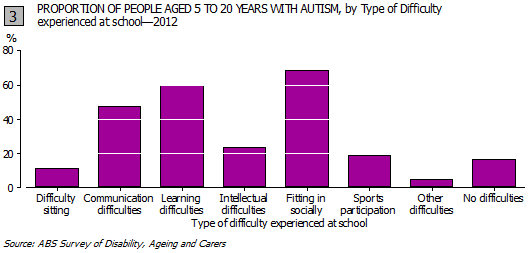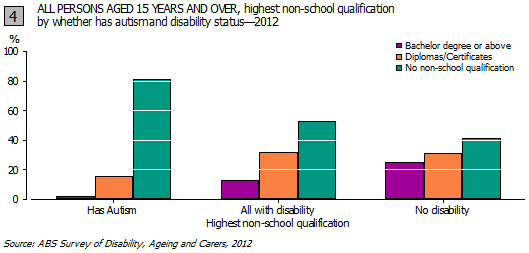AUTISM AND EDUCATION
School is an important social environment where children learn to interact with their peers – a task people diagnosed with autism generally find difficult. An appropriate school environment can provide opportunities to develop important social and life skills, however many children with autism need support throughout their education and beyond.
In 2012, 5% of children with autism attended school and did not experience any educational restrictions. Of the 95% of children who did experience some restrictions, 6% of children were not able to attend school because of their disability and 44% needed to attend either a special class in a mainstream school, or a special school.
For children with autism who were attending school, 86% reported ‘having difficulty’ at school, the majority of whom had difficulty with fitting in socially, learning and communication (Graph 3).

Children with autism may need a high level of support to attend school, with 36% needing a counsellor or disability support person and 39% requiring special tuition. Of those children with autism attending school, 13% did not receive any additional support (excluding attending a special school or attending special classes in mainstream schools).
Data from the SDAC suggests the difficulties experienced in gaining an education continue after school. Of people with autism who had finished school, 81% had not completed a post-school qualification. This was well above the rate for both the rest of the population with disability and people with no disability (see Graph 4).

 Print Page
Print Page
 Print All
Print All